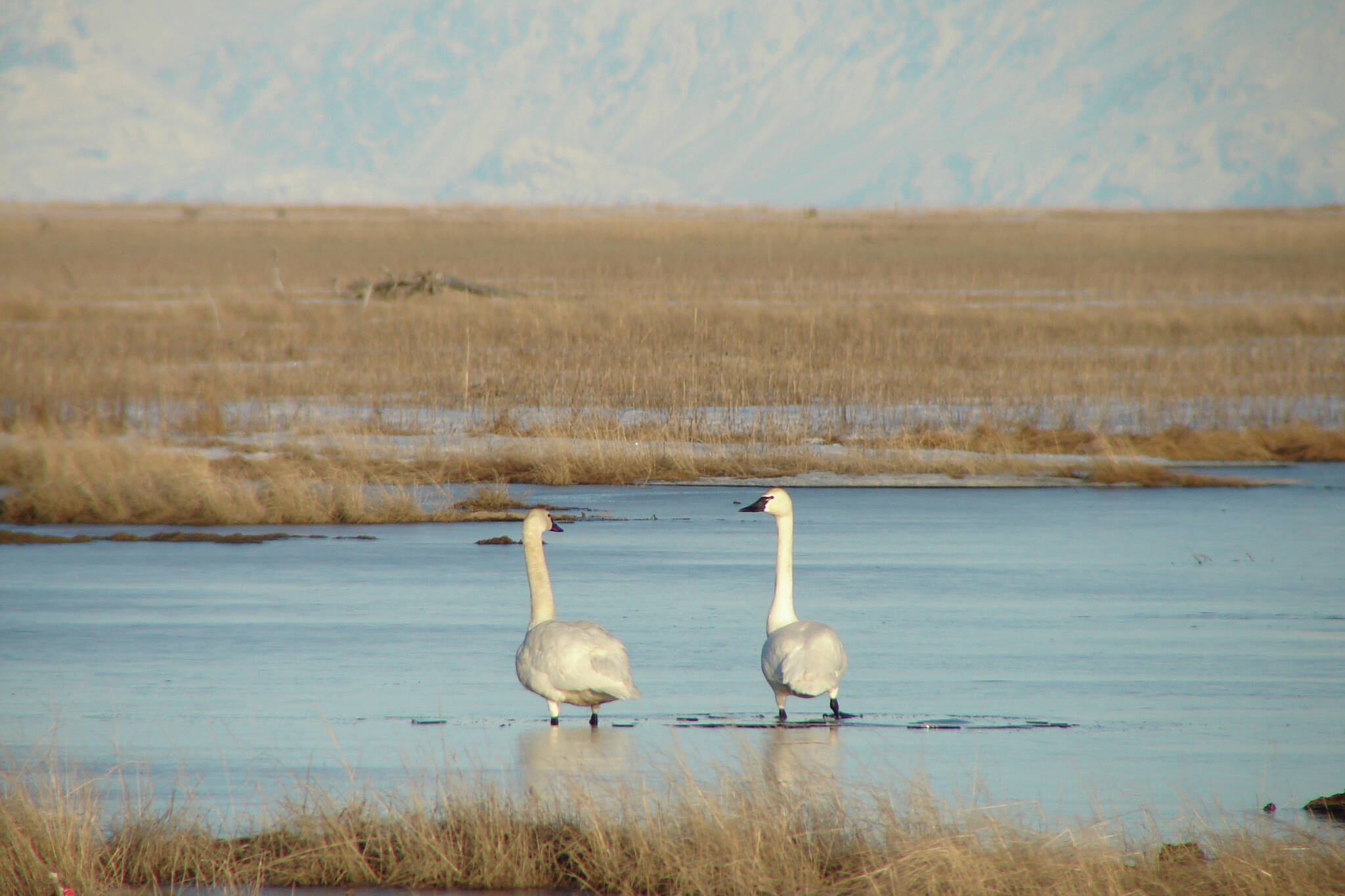The arrival of spring to the Kenai Peninsula is ushered in by so many different signs for different people. For some, it is the breaking up of the ice on the Kenai River. Simple things like flowing water can be seen and heard again.
Beluga whale watching has become a favorite spring activity as these unique creatures follow food up into the river on incoming tides.
For others, it is the horrible smell of decaying vegetation, reminiscent of the inside of a horse’s gut. The off-gassing of sulfur and ammonia trapped in the soil all winter can make any town feel like you are back on the farm, but for some, this actually triggers a warmer sensation of past memories.
Some focus on what is to come after spring and are busy organizing the fishing gear or polishing the golf clubs, prepping to maximize an all-too-short summer. At the same time, others are reeling from repeated late visits of Old Man Winter and are planning a migration out of here next fall. They will forget how bad it was with another exceptional summer, however.
I have always found the arrival of spring to be championed by the first sightings of geese at the Kenai and Kasilof Flats, which happened on April 4 of this year. When I was younger, it was the sudden appearance of white geese next to the road that caught my attention. While the snow geese don’t pour into the area like they used to, I realized how much more times have changed beyond what species we see at the flats.
Now, an email notification’s characteristic “bing” alerts me to the first geese spotted locally and posted on eBird. I also eBird to track the occurrence of Rufous hummingbirds as they make their way to Juneau, Cordova, Whittier, and eventually to breeding areas on the Kenai Peninsula. The excitement builds as they get closer.
Rufous hummingbirds are only here from May to mid-July, so there is a little anxiety to take advantage of the short window to band them before they head back to Mexico.
While the excitement is still palpable, there is a strong realization that I have spent the entire winter on a computer. Our bodies need more sensory input than just from a screen. Spring brings the opportunity to get outside and breathe and smell fresh air.
A long list of studies details how serotonin levels rise with outdoor experiences. The sounds of birds, the smell of spring flowers, and the sound of trickling water all stimulate other parts of your brain that reduce stress and anxiety. DON’T GO LOOK IT UP ON THE COMPUTER. Take my word for it and get out if you can.
For years, one of my favorite “kid” activities was going down to the Kenai River to my “not so secret” fishing spot and looking for lost lures and weights right after ice out when the water is low. I thought I was trying to reclaim gear I had loaned the river the previous fishing season. Looking back, I realize my parents were teaching me to clean up after myself. Picking up all the old fishing lines, rusty hooks, and lead was a perfect activity to take care of the place we loved.
It was the other unplanned experiences, like seeing a mink or maybe just tracks in the mud, a family of otters barking at our presence, and the first spotted sandpipers bobbing along a sandbar, that etched a home in my memory banks. Now, as the years have passed, I am handing off those same tasks to my kids, and they are retaining their own unique experiences from being outdoors. They are breaking from the ease of technology, breathing fresh air, and finding their own signs of spring that fulfill them.
Not everyone will be drawn to the same experiences, which is a good thing, or it would be crowded. But take some time this spring to find your outdoor experience. If you are lucky, a trash pickup day will build memories of a lynx crossing the road before you or an ermine popping out of a hole and staring you down. A beach cleanup day will reward you with the sound of belugas surfacing on their way to the Kenai River. Your friends and family will someday thank you for all of the unintended memories along the way.
Todd Eskelin is a wildlife biologist for the Kenai National Wildlife Refuge. You can find more information on the Refuge at http://kenai.fws.gov or http://www.facebook.com/kenainationalwildliferefuge. The Refuge Notebook is published twice a month, and you can see past Refuge Notebook articles at https://www.fws.gov/kenai-refuge-notebook.


